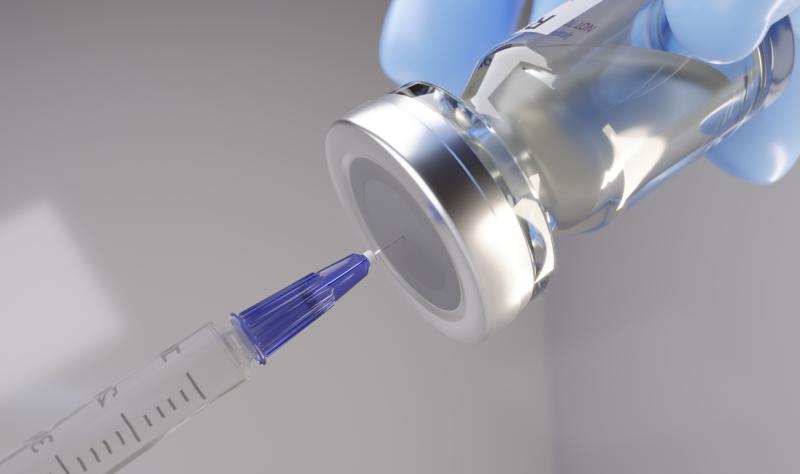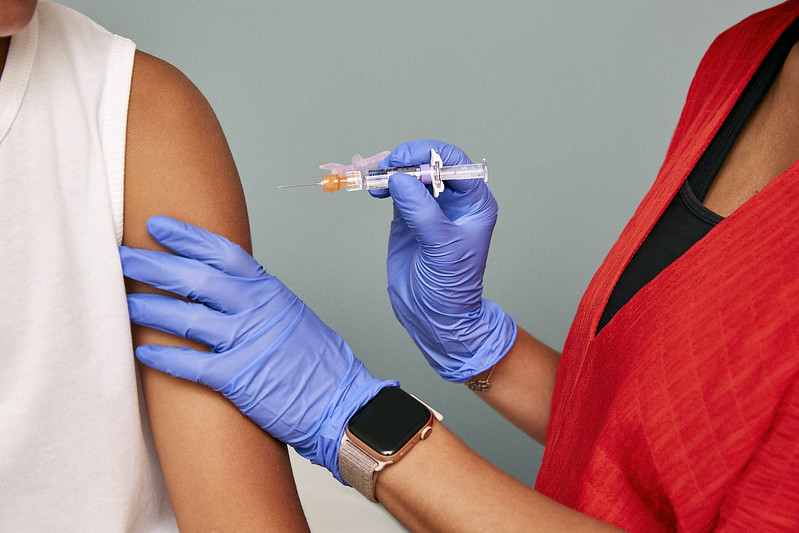Infectious disease specialists lament ‘chaos’ of recent ACIP meeting
Specialists with the Infectious Diseases Society of America said last week’s meeting was a clear departure from ACIP’s standard operating procedures and created more confusion.


Experts with the Infectious Diseases Society of America (IDSA) today expressed alarm and concern about vaccine access now and in the coming years in the wake of last week’s meeting of a federal vaccine advisory board.
The comments were made at an IDSA briefing held to address lingering questions following the meeting of the Centers for Disease Control and Prevention’s (CDC’s) Advisory Committee on Immunization Practices (ACIP). Among the primary questions were what the committee’s recommendations on updated COVID-19 vaccines will mean for access to the shots.
The experts also shared their concerns about the limited participation of CDC staff in the meeting, the type of data that were presented, and the false claims about vaccine safety that were made by several ACIP members during the 2-day meeting.
“Ultimately, what this meeting presented was a sense of chaos, and a sense of lack of confidence in access to vaccines that are safe and prevent disease for the American public,” said Helen Chu, MD, an infectious disease physician and professor of medicine at the University of Washington School of Medicine.
A ‘clear departure’ from previous ACIP meetings
Chu, a former ACIP voting member, elaborated on how last week’s meeting differed from previous meetings of the group.
“For over six decades, ACIP was regarded as the international gold standard for vaccine decision-making,” Chu said. “Until recently, ACIP was comprised of experts, including doctors, public health specialists, scientists who study immunology and epidemiology, and experts in clinical trials who carefully weighed the evidence and made recommendations for vaccines.”
But that changed in June, when Chu and 16 other ACIP members were removed by Health and Human Services (HHS) Secretary Robert F. Kennedy Jr., who replaced them with 12 new members—7 in June and 5 last week—with comparatively less expertise. Several of the new members also share Kennedy’s anti-vaccine views.
Chu said last week’s meeting was a “clear departure” from the group’s standard operating procedures, which she called a “careful, deliberate, and rigorous” process that included scientific review of safety and efficacy data, assessment of the data’s quality and strength, and consideration of vaccine risks and benefits for different groups. One glaring example was that much of the information about what the committee was planning to vote on was not shared with the public ahead of time, as it typically is.
“It’s not clear how the agenda items were chosen, and why the committee made the decision to readdress two safe and effective vaccines—hepatitis b and measles, mumps, rubella, and varicella (MMRV)—that have already been approved and used for many decades in the United States, or to change the recommendations for COVID-19 vaccines,” she said.
Chu also said the discussions focused less on data presentations from CDC scientists and more on a small set of unvetted studies and safety events, “essentially cherry-picking the data, rather than looking at the big picture.”
Ultimately, what this meeting presented was a sense of chaos, and a sense of lack of confidence in access to vaccines that are safe and prevent disease for the American public.
Andrew Pavia, MD, a pediatric and adult infectious disease physician at University of Utah Health who has served on ACIP workgroups, echoed Chu’s criticism, citing the lack of expertise of the new members, the abandonment of “careful, comprehensive, and transparent” review of all the factors that go into vaccine recommendations, the limited participation of CDC experts, and the exclusion of liaison groups from the proceedings.
Pavia said he was particularly alarmed by ACIP members’ discussions about the hepatitis B vaccines. Although the committee ultimately decided to table the vote for another meeting, members were considering a recommendation that children receive the first dose of the vaccine 1 month after birth if the mother tests negative for hepatitis B. The current recommendation is that all children receive the first dose at birth.
Noting that no new safety concerns about the birth-dose of the hepatitis B vaccine have emerged in the more than 30 years it’s been recommended, Pavia said there was “no particularly compelling” reason to revisit this recommendation.
“The committee did not offer a coherent reason for addressing this,” Pavia said. “Fortunately, they decided to delay a vote, but the discussion may sow confusion, and I fear that their deliberation is not over.”
Confusing COVID vaccine recommendations
Regarding the committee’s recommendations for who should receive updated COVID vaccines, Chu said she believes they were actually broader than what the Food and Drug Administration (FDA) approved, though the language of the voting questions were confusing.
In late August, the FDA approved the updated formulation of the COVID vaccines only for those 65 and older and for those aged 6 months to 64 years who are at high risk for severe disease. But in one of its votes, the ACIP essentially recommended the vaccines for everyone over 6 months of age based on shared clinical decision-making with providers. HHS later clarified in a statement that providers include doctor, nurses, and pharmacists, and that shared clinical decision-making allows for vaccines to be covered by insurance.
In practice, Chu said, that could mean that anyone 6 months and older who wants a COVID vaccine—or, for children, whose parents want vaccination—should be able to get one after discussion with a pharmacist or a provider about the risks and benefits.
“Theoretically, this should expand access to vaccines,” Chu said.
But both Chu and Pavia argued that the real-world application of this recommendation could be more complicated, since the ability of pharmacists to give vaccines varies by state.
“In some states, the ACIP vote will make it clear that pharmacists can feel comfortable giving the vaccine,” Pavia said. “In other states, they will look to the FDA, or they may look for documentation that a discussion has occurred with your provider.”
Pavia said this could result in doctors in states that require prescriptions for vaccines getting hundreds and hundreds of requests for an in-person or virtual consultation to get a prescription.
“This is an incredible burden on physicians and patients,” he said.
Concerns about a patchwork of recommendations
Several states have already taken action to ensure that people can get COVID vaccines without a prescription. Yesterday, the Minnesota Department of Health endorsed broader COVID-19 vaccine recommendations that have been issued by professional medical societies, including the American Academy of Pediatrics (AAP), the American Academy of Family Physicians (AAFP), and the American College of Obstetricians and Gynecologists (ACOG), and issued a standing order giving pharmacists the option to provide COVID vaccines to patients.
“We’re following the science, and the science is clear. COVID-19 vaccines prevent severe illness and death for people of all ages, and we want to ensure access to vaccination,” Minnesota Health Commissioner Brooke Cunningham, MD, PhD, said in a press release.
Pennsylvania ‘s Department of Health issued similar guidance, recommending that state residents follow immunization recommendations from the AAP, AAFP, and ACOG. That followed an order earlier this month that allowed pharmacists in the state to give COVID vaccines without a prescription.
Pavia said it’s helpful that states are taking action and looking to professional medical societies for evidence-based recommendations. But he’s concerned that this approach creates a “patchwork” whereby people get different messages in different states. He pointed out that, in Utah, for example, pharmacists are still unclear about how to proceed.
“It would be much better if we had a single, trusted voice that was speaking for everyone,” he said.



